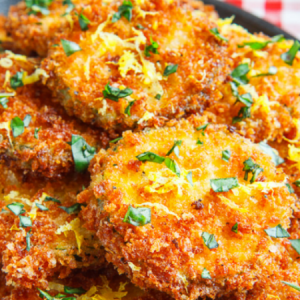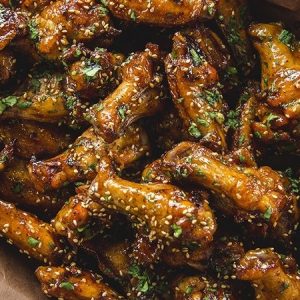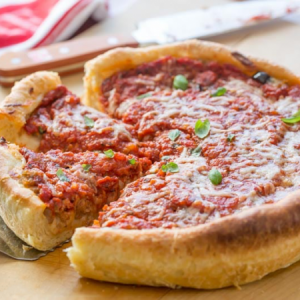Kimchi is one of my most favorite fermented foods. It is a beautiful pickled cabbage that comes from Korea. It is seasoned with lots of garlic and chili powder and sometimes contains daikons, carrots and other types of vegetables. If you have never made kimchi before, this recipe is less daunting to you because you are going to use just one head of napa cabbage. Get yourself one napa cabbage, give it a rinse and cut it in half and remove the core then cut in in half again and then cut the whole quarters into about two-inch pieces. Put them n a large pot, sprinkle with salt and then add water to cover. Let it soak for an hour and a half hours, you really want the salt water to kind of penetrate the cabbage. While the cabbage is soaking, you need to be making the sauce.
Add one-half tablespoon of glutinous rice flour and add half a cup of flour, whisk that together and make sure there are no lumps then heat that on medium heat. Towards the end of the cooking, add in one tablespoon of sugar and continue to mix until nice and thick. Grate one small onion then take five cloves of garlic and press or mince them then take one piece of fresh ginger and grate it as well. Chop two green onions and add to the grated mixture then the cooled rice paste, add two tablespoons of fish sauce and add half a cup of Korean red pepper flakes. You can substitute with any other kind of red pepper flake, combine them together and set them aside. After about two hours, drain the cabbages, then combine them with the pate.
Really massage it and get all that paste well-incorporated int the cabbage. When everything is coated in the paste, pack it very tightly into a nonreactive container, pack it as tight as you can, you don’t want any air pockets. Close with a lid and let it sit for 24 to 48 hours until the kimchi is nice and tangy. Kimchi is so versatile, you can make fried rice with it, you can serve it with eggs or serve it with something kinda fatty.
Ingredients;
- 1 medium head napa cabbage (about 2 pounds)
- 1/4 cup sea salt or kosher salt
- Water, preferably distilled or filtered
- 1 tablespoon grated garlic (5 to 6 cloves)
- 1 teaspoon grated peeled fresh ginger
- 1 teaspoon granulated sugar
- 2 tablepoons fish sauce or salted shrimp paste, or 3 tablespoons water
- 1 to 5 tablespoons Korean red pepper flakes
- 8 ounces Korean radish or daikon radish, peeled and cut into matchsticks
- 4 medium scallions, trimmed and cut into 1-inch pieces
Instructions;
- Cut the cabbage lengthwise through the stem into quarters. Cut the cores from each piece.
- Cut each quarter crosswise into 2-inch-wide strips.
- Salt the cabbage. Place the cabbage in a large bowl and sprinkle with the salt.
- Using your hands, massage the salt into the cabbage until it starts to soften a bit.
- Add enough water to cover the cabbage. Put a plate on top of the cabbage and weigh it down with something heavy, like a jar or can of beans. Let stand for 1 to 2 hours.
- Rinse and drain the cabbage. Rinse the cabbage under cold water 3 times.
- Set aside to drain in a colander for 15 to 20 minutes. Meanwhile, make the spice paste.
- Make the spice paste. Rinse and dry the bowl you used for salting. Add the garlic, ginger, sugar, and fish sauce, shrimp paste, or water and stir into a smooth paste.
- Stir in the chili flakes, using 1 tablespoon for mild and up to 5 tablespoons for spicy, set aside until the cabbage is ready.
- Combine the vegetables and spice paste.
- Gently squeeze any remaining water from the cabbage and add it to the spice paste. Add the radish and scallions.
- Mix thoroughly. Using your hands, gently work the paste into the vegetables until they are thoroughly coated.
- Pack the kimchi into the jar. Pack the kimchi into a 1-quart jar. Press down on the kimchi until the brine rises to cover the vegetables, leaving at least 1 inch of space at the top. Seal the jar.
- Let it ferment for 1 to 5 days. Place a bowl or plate under the jar to help catch any overflow.
- Let the jar stand at cool room temperature, out of direct sunlight, for 1 to 5 days.
- When the kimchi tastes ripe enough for your liking, transfer the jar to the refrigerator.









